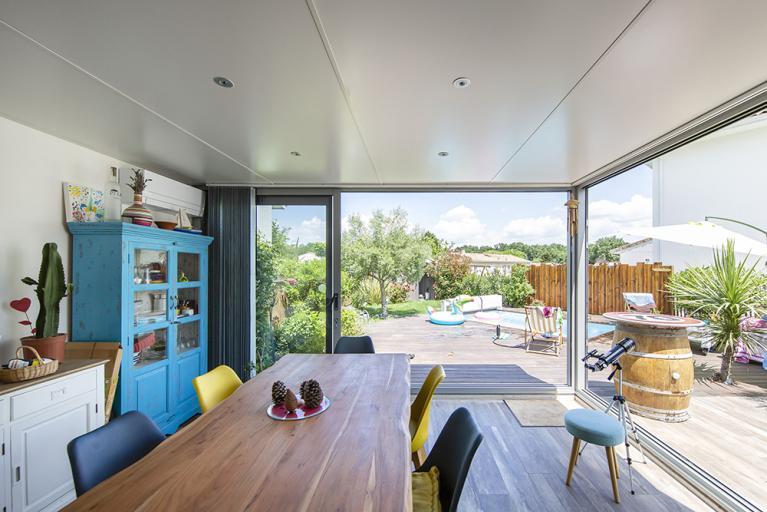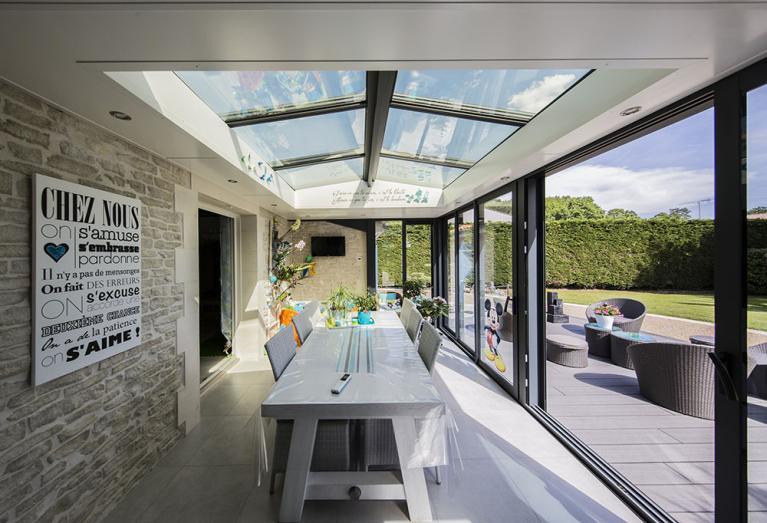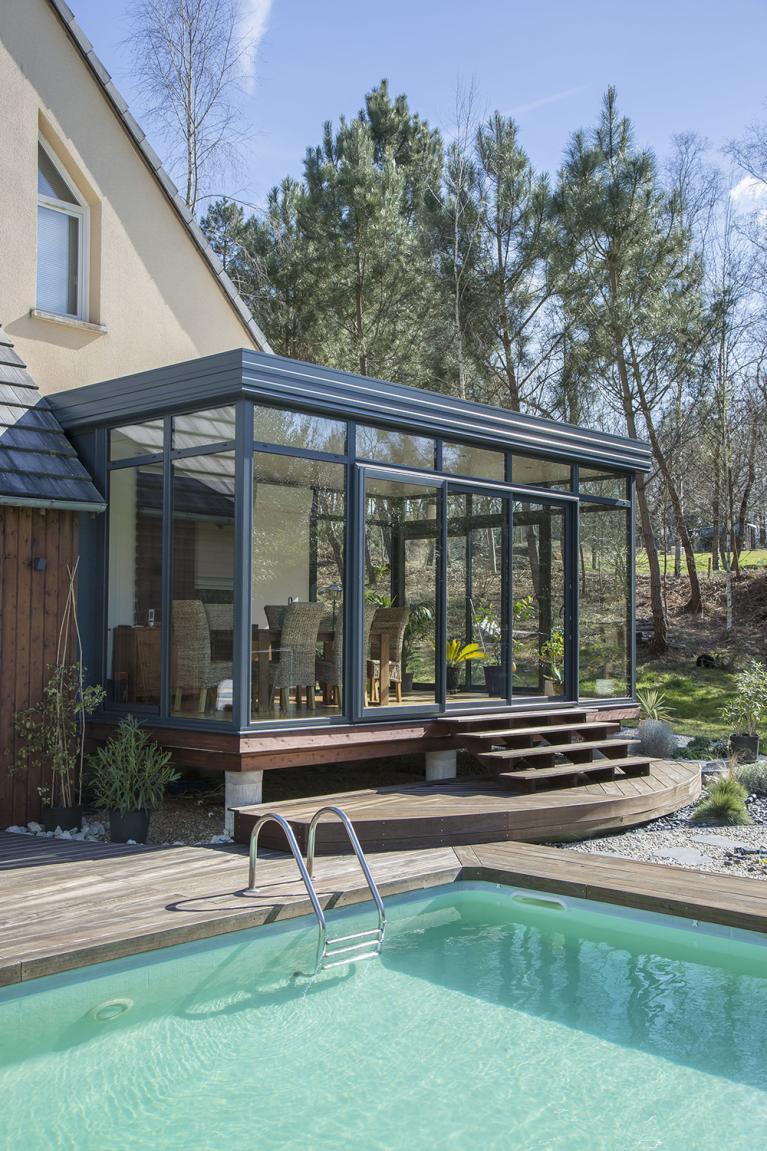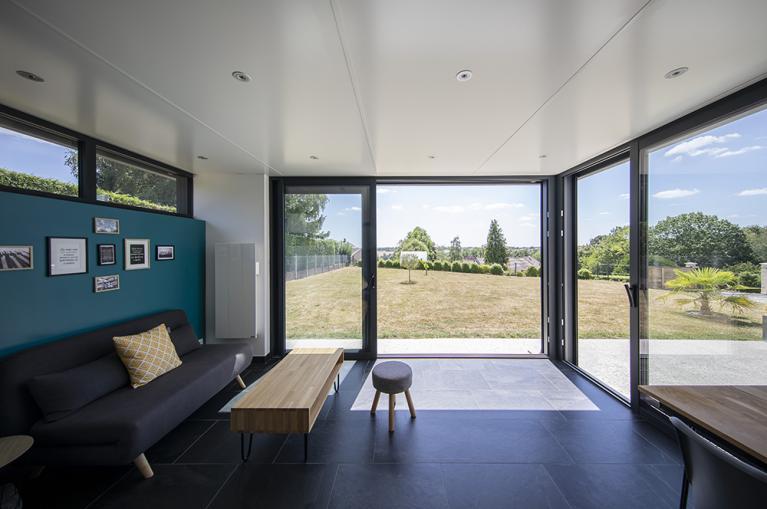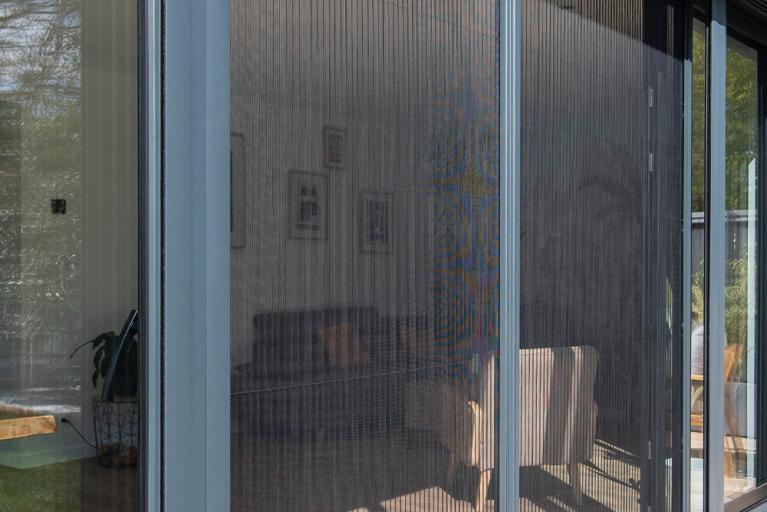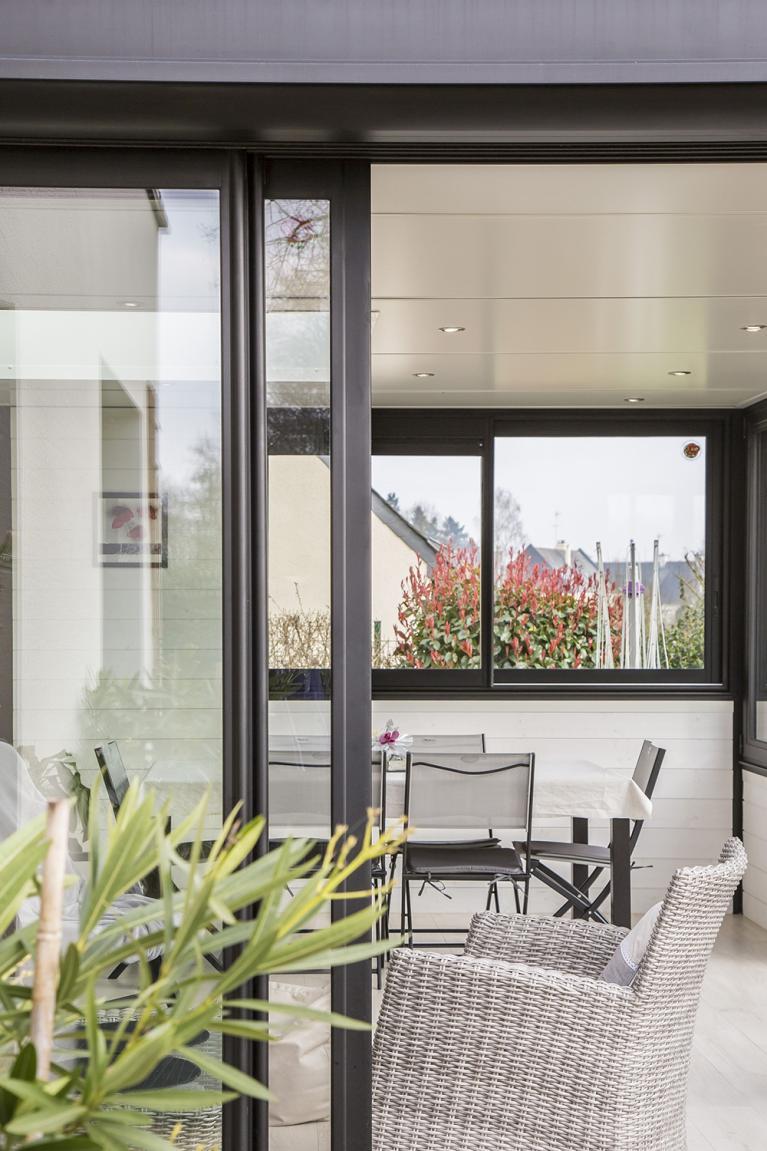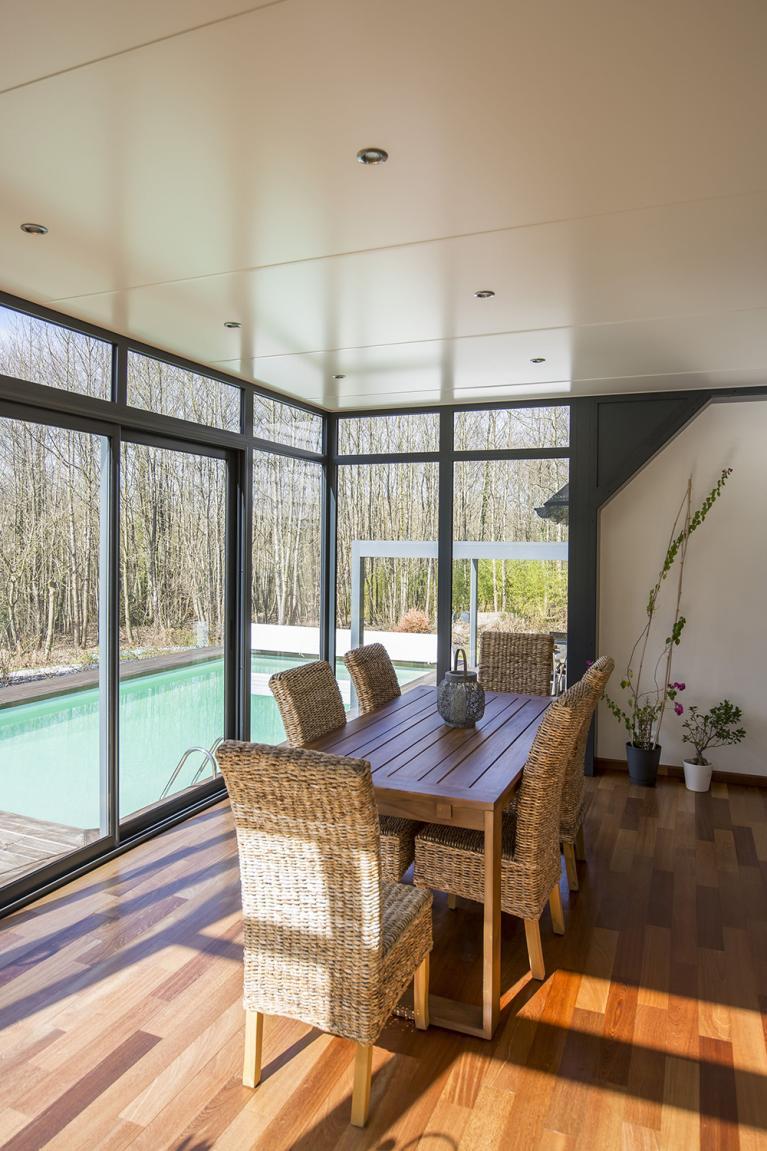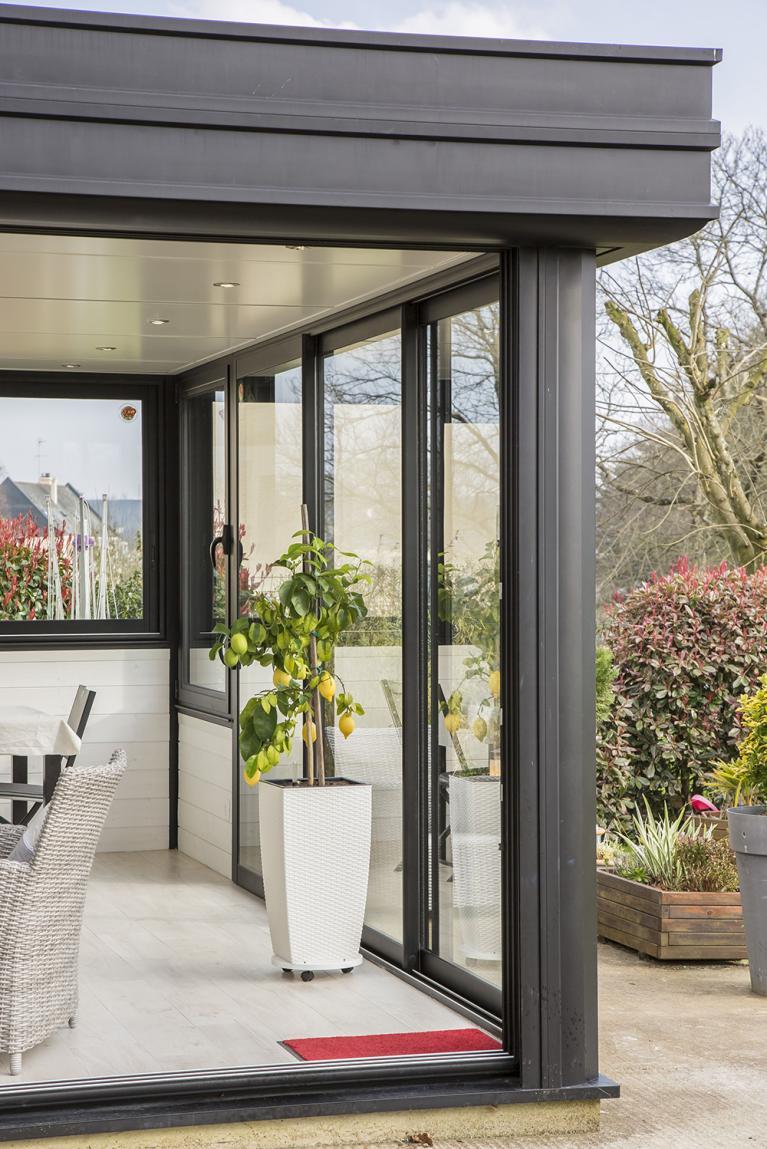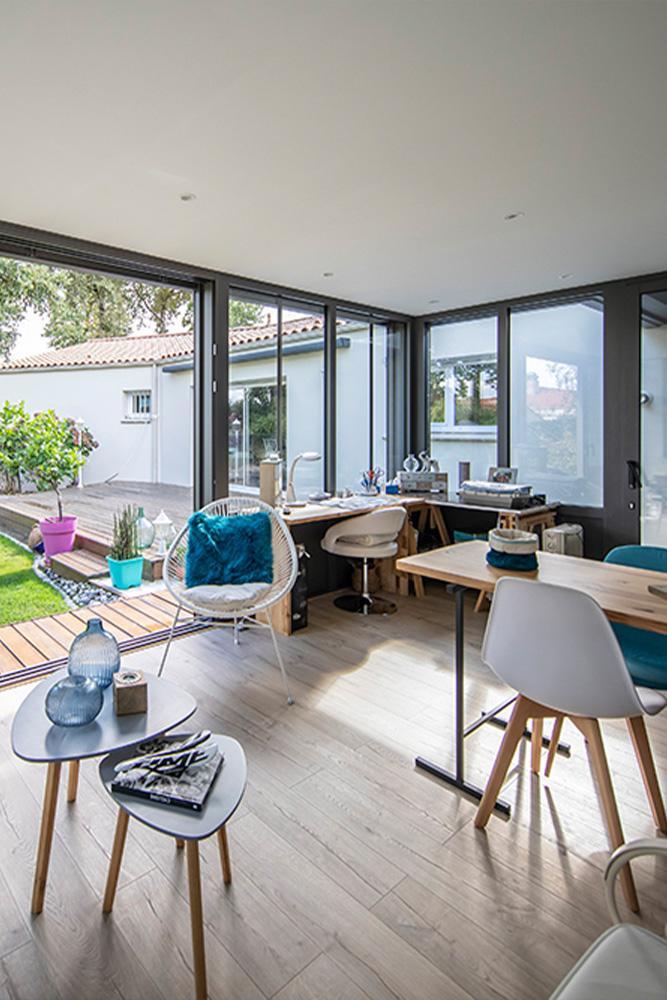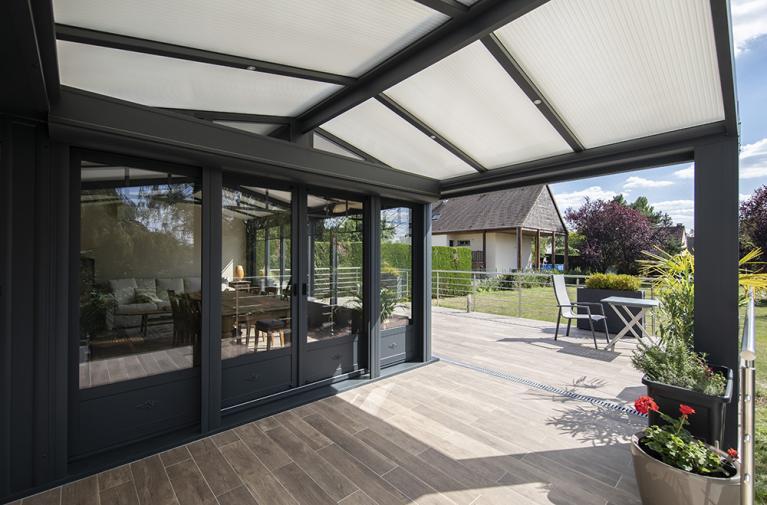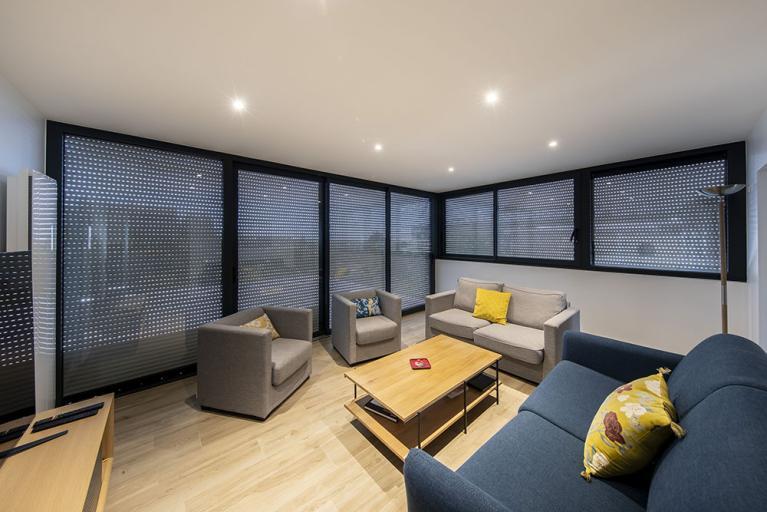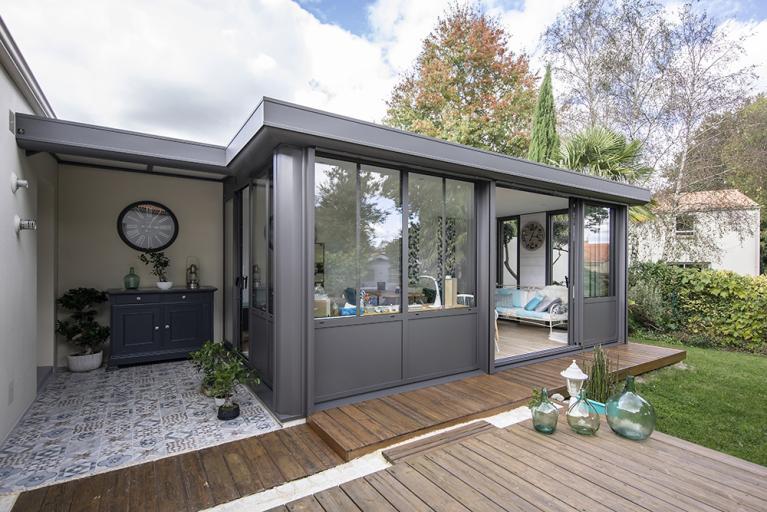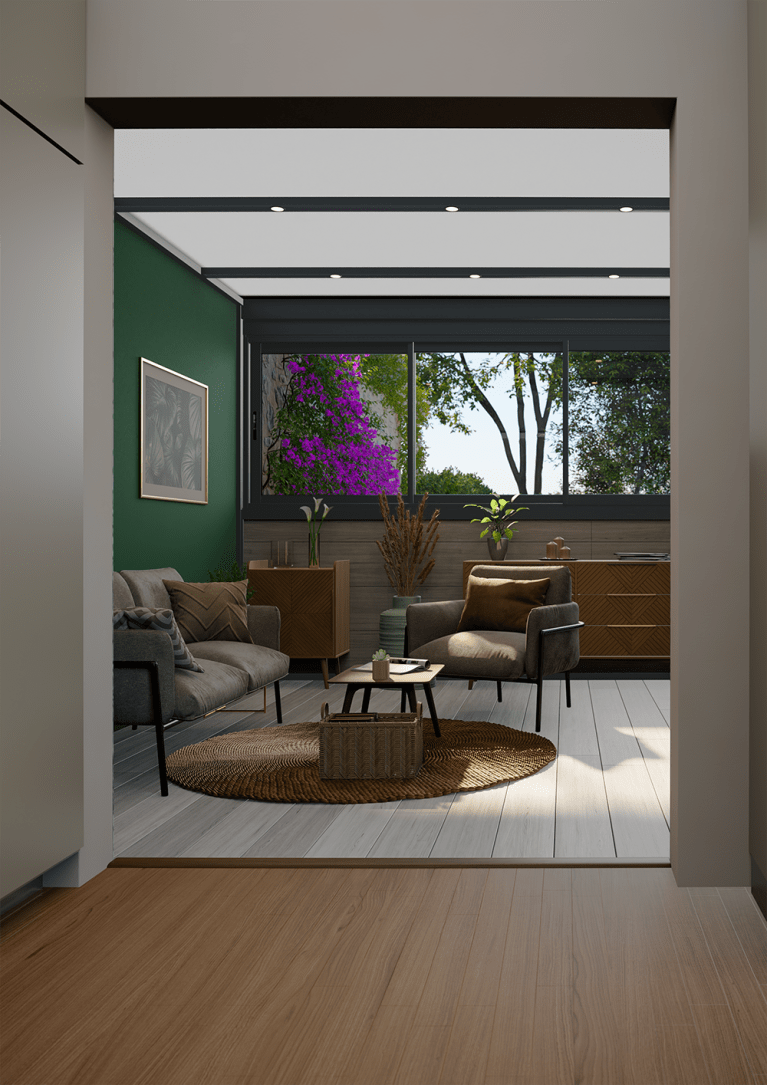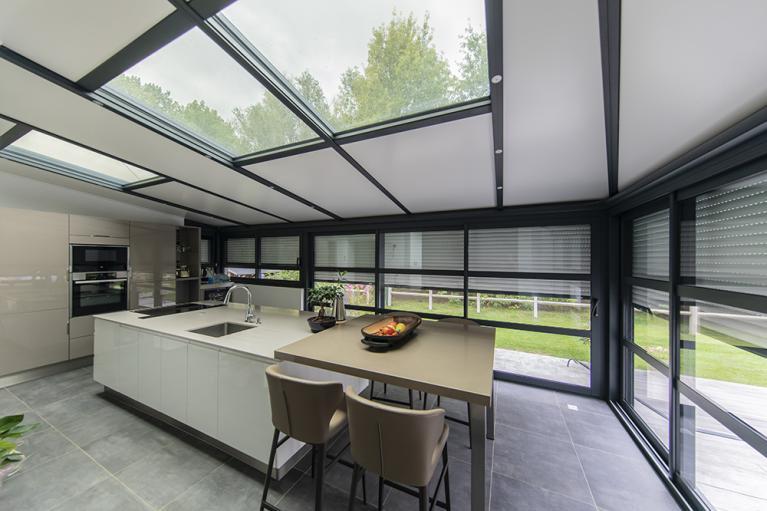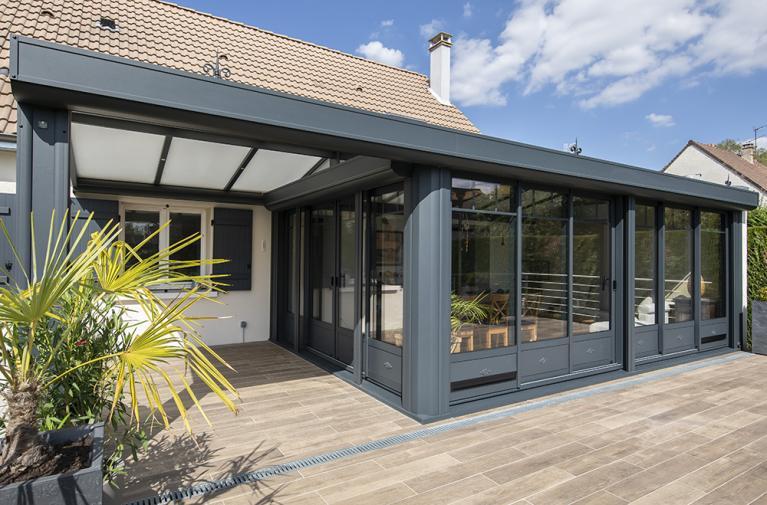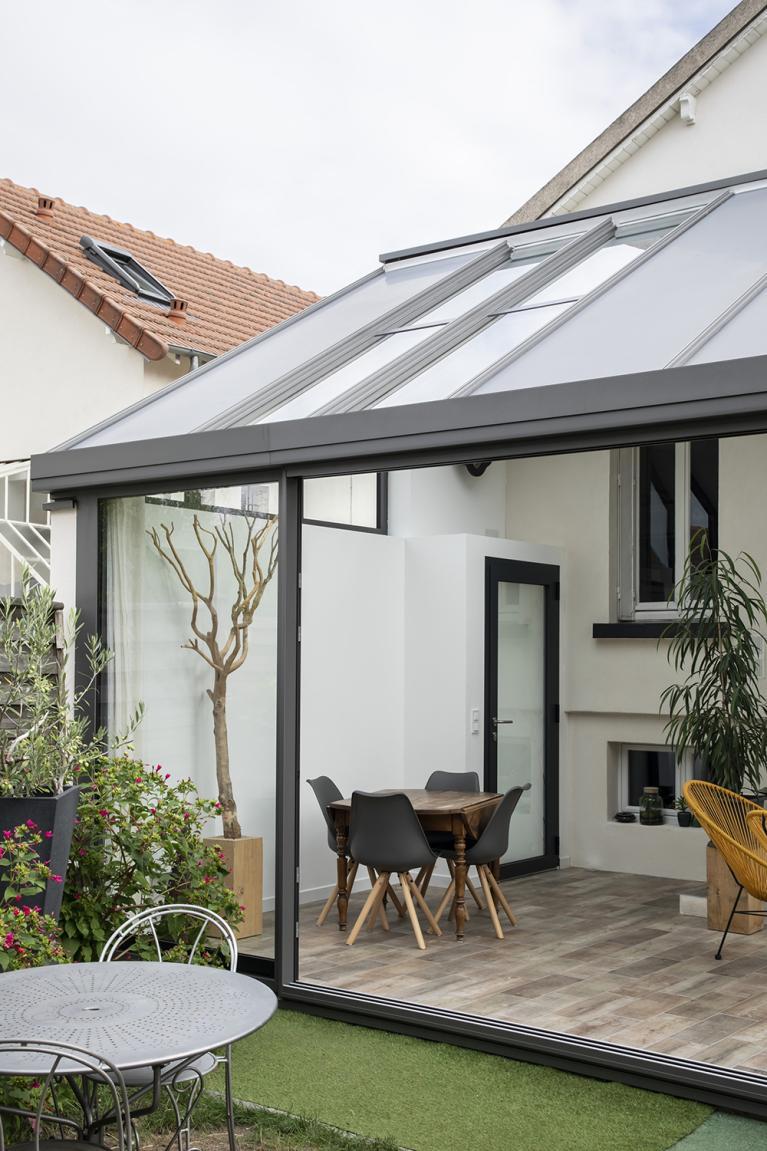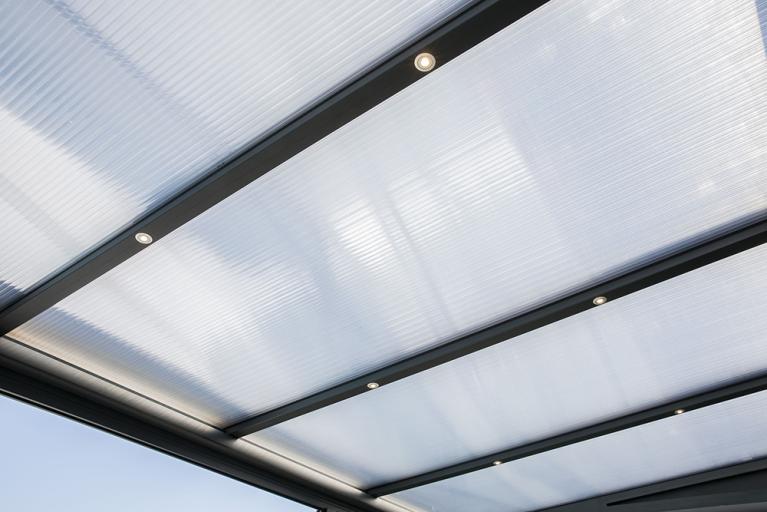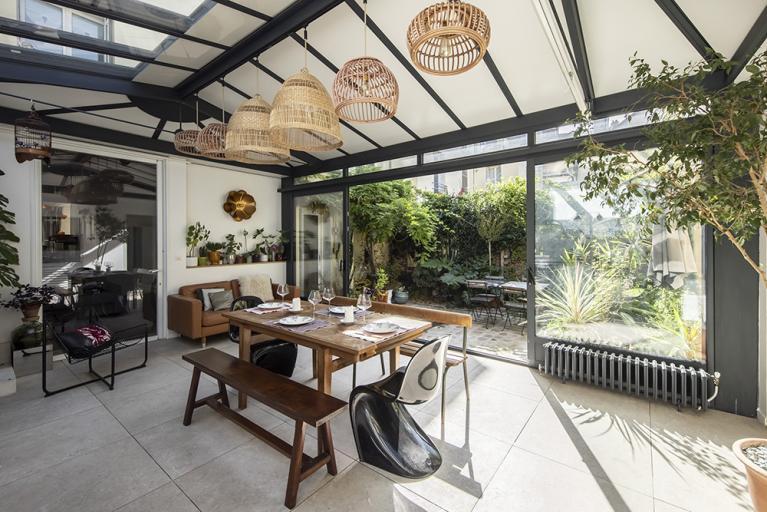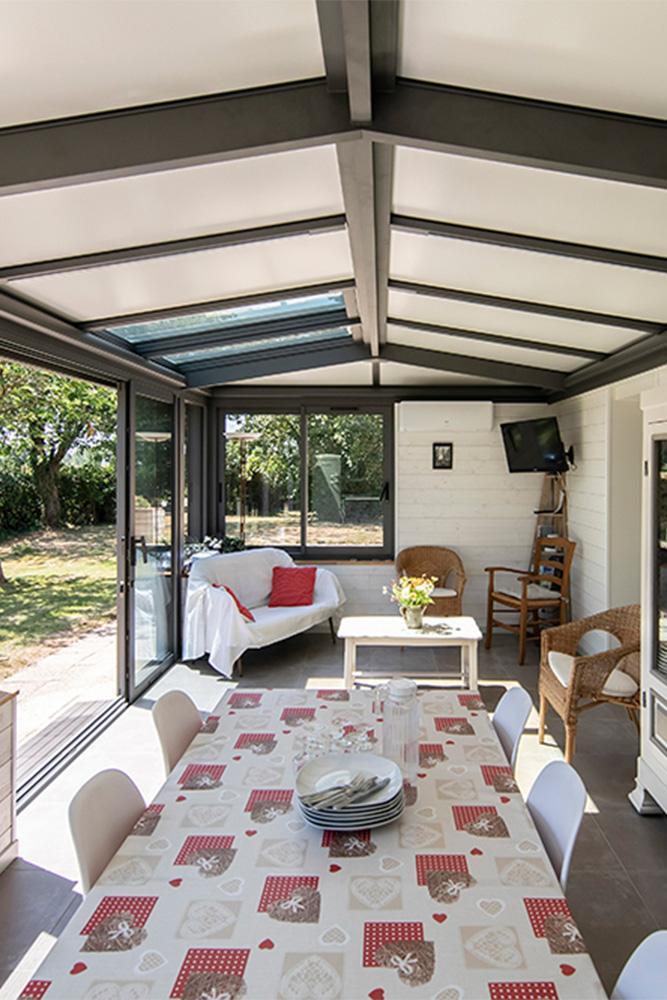How can I plan the construction of a house enlargement?
Are you planning to extend your property? Realising your dreams of extra space can transform your daily life and increase the value of your property. However, embarking on such a project requires good planning and attention to every detail. AKENA shares with you this comprehensive guide that will accompany you step by step in the construction of your house enlargement: from the initial design to the selection of materials, including compliance with local regulations.
What questions should you ask yourself before enlarging your house?
Building a house extension is a great way to enjoy more space in your home without having to move. But before you start, it is essential to ask yourself the right questions and think carefully about all aspects of the project. To do this, we advise you to determine in advance:
- Your space requirements: identify precisely what you need in terms of additional space. Think about the purpose of the future room, whether it will be a bedroom, an office or a kitchen.
- The appropriate style of extension: the building must harmonise with the existing architecture of your house. Decide whether you prefer an open-plan structure or a more traditional extension, and consider the impact of the latter on your land.
- The building materials: choose materials that combine aesthetics and durability. Choose options that blend in with the existing building while meeting energy performance and resistance standards.
- The layout of the enlargement: think about thermal and acoustic insulation, the supply of natural light, and the design of your future living room before starting the work.
- Compliance with local regulations: before laying the first stone, find out about the current town planning regulations and make sure you obtain the necessary permits.
- Your budget: draw up a detailed budget including all the costs associated with the project, such as materials, labour and administrative procedures. Also take into account any financing costs.
- The method of financing: assess your financial resources and determine whether you need a mortgage.
- The builder: select a reputable professional with verifiable experience in similar projects from whom you can request a detailed quotation.
- The steps to follow: from the administrative procedures to the completion of the work, follow each phase of the project carefully to ensure its success.
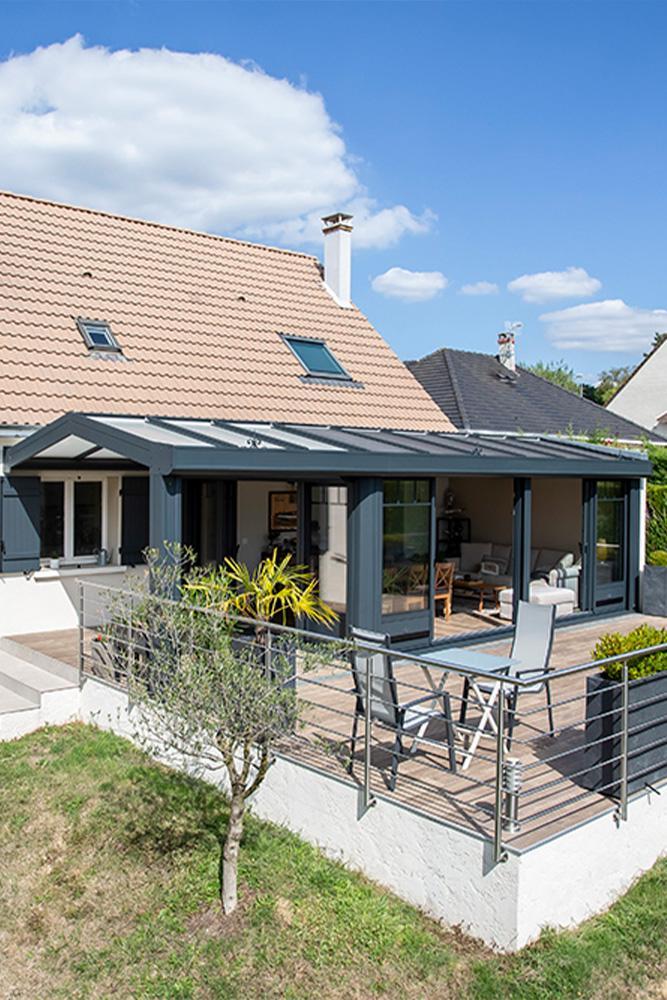
How do you determine the surface area needed to build the extension?
To begin with, identify precisely why you need more space. To help you, here is a summary of the recommended minimum surface area per room type:
- entrance hall: at least 2 m² to allow easy access and some space for storing shoes and coats;
- living room: at least 20 m² for a comfortable layout including a sofa, coffee table and media space;
- living room with dining room: at least 40 m² for a combined space, allowing for a fluid separation between the relaxation area and the dining space;
- kitchen: at least 12 m², with the possibility of opening it onto a living room for a more airy and convivial effect;
- bedroom: between 9 and 12 m² to accommodate a double bed and basic furniture such as a wardrobe or chest of drawers;
- master suite: at least 15 m², offering enough space for a larger bed, built-in storage, and possibly a small relaxation area;
- office: at least 9 m² to guarantee enough space for a desk and essential storage solutions, while maintaining a certain freedom of movement;
- artist's studio: the size depends on the activity practised. The bigger, the better. However, a minimum of 9 m² is required to provide the necessary space for equipment and creativity;
- games room: at least 8 m² to allow for the installation of games, and to guarantee adequate space for children to move around;
- relaxation room: at least 12 m² to create a place to relax with comfortable armchairs, perhaps equipped with a small entertainment system or a library.
Also remember to check local regulations to find out how far you can extend your home. Some areas have restrictions on the percentage of the plot that can be covered by buildings or impose specific setbacks.
Get inspired
What are the different types of house enlargements?
When it comes to enlarging a house, there are several options available to owners, each with its own advantages and characteristics.
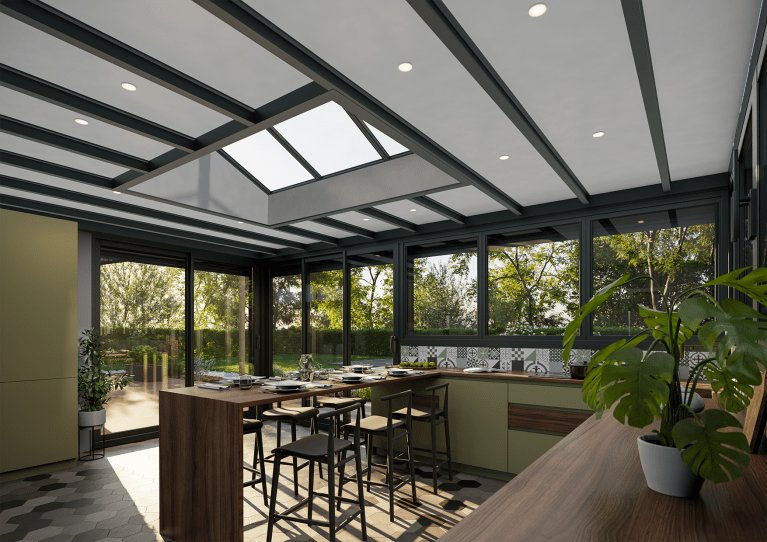
The house extension for a harmonious extension
The extension of a house allows for a harmonious extension: it is an elegant and functional solution for those who wish to embark on the construction of a house enlargement without compromising its aesthetics. This type of structure is meticulously designed to integrate perfectly with the existing building, whether through the continuity of the architectural lines, the coherence of the materials used, or the addition of modern elements that offer a thoughtful and enriching contrast.
At AKENA, our innovative models ensure both the aesthetics and functionality of your living space. Our designs include strategically placed skylights to maximise natural light, customisable shutter options that allow you to control the visibility and security of your space, and high-performance thermal insulation to ensure optimal comfort.
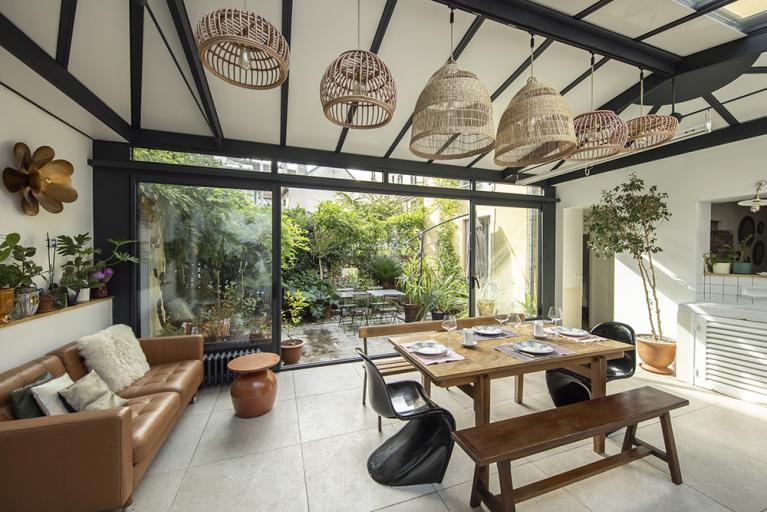
The conservatory to create a special link with the garden
The conservatory, as a glass extension, is designed to harmoniously merge the boundaries between your house and your garden. This structure creates a unique transitional space where the interior meets the exterior thanks to a breathtaking view of your green spaces. It also allows you to enjoy the changing seasons in absolute comfort, due to its ability to offer an abundance of natural light that illuminates the room throughout the year.
Ideal as a dining room or as an additional living room, the conservatory adds a significant modern and functional dimension to your home. It can also become a haven of peace, a place to relax and read, meditate or simply unwind while listening to the sounds of nature.
What are the most commonly used materials for house enlargement?
When building an enlargement to a house, the choice of materials is essential to ensure both the durability and the aesthetics of the extension.
Aluminium
Aluminium is frequently used for the structure of house extensions because of its robustness, lightness and resistance to corrosion. This material is also prized for its flexibility in terms of finishes and colours, allowing for aesthetic integration with the existing architecture. It is also a popular choice for its modern design.
Glass
Glass is the material of choice for extensions designed to maximise natural light and improve the visual connection with the outside. It is used in large glazed doors, sliding doors and even roofs to create light and airy spaces. Advanced glass technologies maintain energy efficiency while providing superior acoustic and thermal insulation.
The finishing touches
The finishing touches play an essential role in the final appearance of the extension. They include elements such as cladding, paint, interior wall covering and flooring. At AKENA, for example, we offer a wood finish for exterior or interior cladding. Combined with the strength of aluminium, it brings a touch of warmth and naturalness.
What are the procedures for enlarging your house?
It is essential that you find out about the mandatory administrative procedures for the construction of your house enlargement. These depend on the configuration and location of your structure.
Prior declaration of works
For small extensions of between 5 m² and 20 m², a prior declaration of works is sufficient. This simplified procedure requires fewer documents than a building permit and is generally quicker to obtain.
How do you estimate the cost of an extension to your home?
Assessing the budget needed to build a house enlargement requires considering several factors.
The surface area of the enlargement
The size of your enlargement plays an essential role in determining the total cost of your project. The more the surface area increases, the more the overall price will rise. In general, the rates for house extensions are calculated according to the surface area in square metres (m²). Expect to pay between €900 and €3,200 per square metre for this type of work. However, it is important to understand that these are only estimates. The final price will depend on several other factors.
The materials used
The type of materials chosen for the extension will also have a significant impact on the cost. High-quality materials that provide good insulation are of course more expensive to purchase. However, they will ensure that you can enjoy a comfortable living space for many years to come. For the construction of an aluminium house extension, you should allow between €2,000 and €3,000 per square metre.
The work to be carried out
The work required for a home extension can vary depending on the complexity of each project. Enlargements that require significant structural modifications or incorporate specific architectural features tend to be more expensive. This is due to the need for specialised labour and specific materials adapted to the project's own requirements.
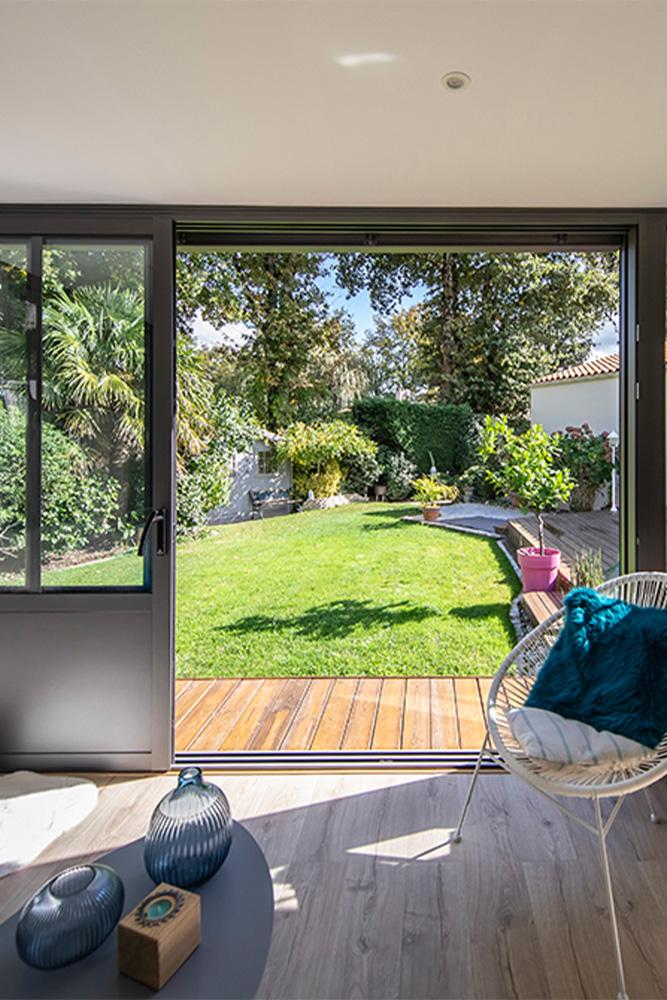
Geographical location
The location of your property greatly influences the price of materials and labour. Some regions may have higher costs due to limited access to resources or because of specific local regulations that may require particular materials or construction techniques.
The workforce
The cost of labour is a factor that should not be overlooked when calculating the overall price of your project. It can vary considerably depending on several criteria (the region, the complexity of the operations, the skills required, and the type of professionals hired). Entrusting the construction of your house enlargement to a renowned and experienced company may cost more, but you will be guaranteed quality work and efficient project management.
Additional costs
Don't forget to include in your budget the costs of planning permission, architect's fees, and possibly the costs associated with moving existing installations (such as electricity and plumbing).
How can I finance the construction of my house enlargement?
To finance the construction of your house extension, several options are available to you.
Using your personal savings is often the most direct and economical method, as it allows you to avoid or reduce the interest costs associated with borrowing. However, if the funds are not sufficient to cover the entire project, the works loan is a good alternative. Designed specifically for renovation or enlargement plans, this type of credit can go up to €75,000, with repayment spread over an average of 7 years.
At AKENA, we are here to help you navigate these options. Our advisors are available to analyse your economic situation and guide you towards the most beneficial financing solution for your enlargement project.
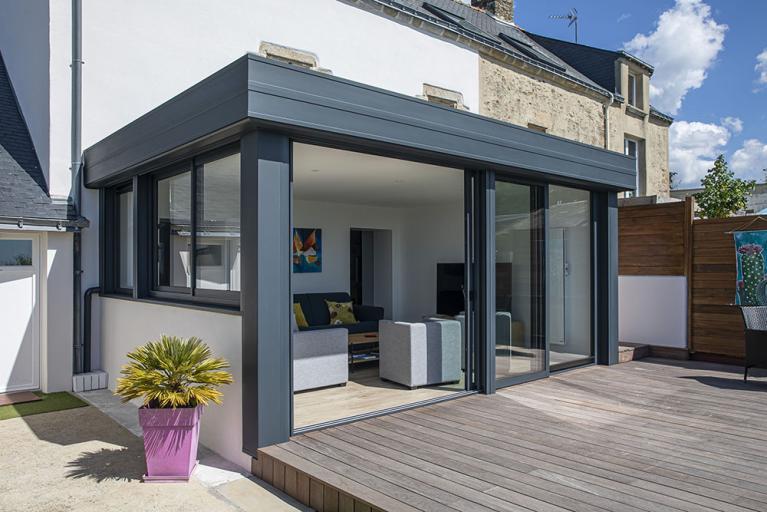
What are the steps to follow to successfully complete your enlargement project?
To avoid unpleasant surprises when building your house enlargement, it is essential to follow an effective methodology and to respect certain key stages.
1. Define your needs and your budget: start by clearly identifying your expectations in terms of functionality and aesthetics for the extension. Then establish a realistic budget that takes into account all foreseeable costs.
2. Make sure you comply with local regulations: find out about local building regulations, including zoning restrictions, planning rules and legal distances from neighbouring properties.
3. Use qualified professionals: for optimal support, seek out recognised companies such as AKENA, who can guide you and offer valuable advice from the start of the project.
4. Design and finalise plans: work with an architect or designer to develop precise and detailed plans for the extension. This includes the layout of the rooms, the materials to be used, and the technical specifications.
5. Obtain administrative authorisations: submit your plans to the municipality to receive the necessary building permits. This process can take more or less time depending on the scale of the project and local regulations.
6. Carry out the work: you have all the required authorisations? It's time to start building your house enlargement! Closely monitor the progress of the work, and ensure that everything is carried out according to plans and regulations by staying in regular communication with the site manager.
7. Acceptance of the work: at the end of the work, carry out a final inspection with the builder. You will need to submit a declaration certifying that the operations comply with the approved project.
8. Fitting out and enjoying your extension: once the enlargement is complete, you can proceed with the interior and exterior fitting out, and savour your first moments in your new living space.
Your builder AKENA: the perfect partner for all your extension projects
With 40 years of experience in the field of house extensions, AKENA is the ideal partner to bring your project to life. We offer tailor-made solutions, adapted to your needs and your aesthetic preferences. Each model is designed to blend in perfectly with your existing space while meeting your functional requirements.
At AKENA, we understand that the administrative process can often be a major obstacle. That is why we take care of all the administrative procedures necessary for the realisation of your project, thus ensuring you a hassle-free experience.
Our commitment to quality and customer satisfaction is backed by a 10-year warranty on all our products. This warranty covers the structure, materials and finish of your extension, thus offering you total peace of mind.
From design to installation, we support you at every stage of your project. Our professionals are at your disposal to advise you, answer your questions, and ensure that your expectations are fully met.
Trust AKENA, and request your free, no-obligation quotation for the construction of your house enlargement!
Find all the magazine's articles
You have a project?
Would you like a personalised 3D study and a free quotation? Contact us by clicking below.
AKENA is...
Over 40 years of experience
Founded in 1981 by one man, we now have more than 500 employees dedicated to making your project a success.
Made in France
A historic site and two factories covering more than 25,000 m² in Dompierre-sur-Yon in the Vendée region (85)
Innovative and tailor-made products
At AKENA, we are brimming with new ideas to improve and enhance our products.
The European leader in conservatories, pergolas...
But not only! AKENA also offers a complete range of carports and pool houses.
